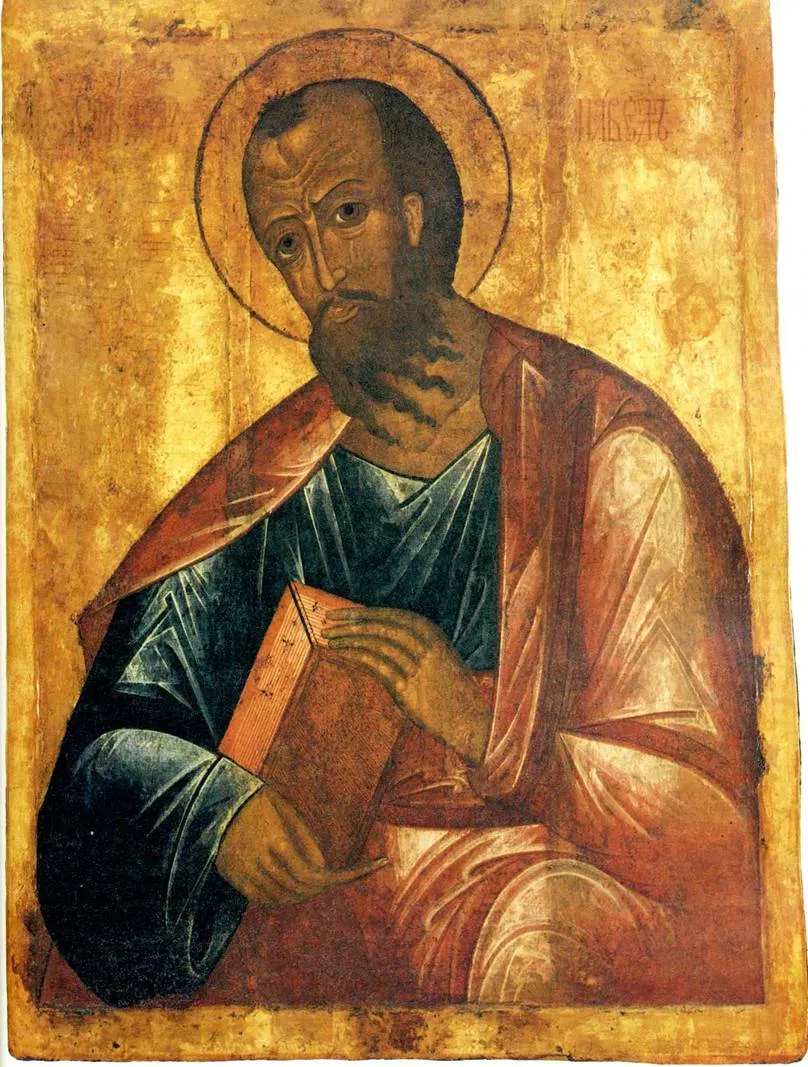Apostle Paul’s life and teachings have remained a significant influence on Christianity. With varying accounts about his passing, it is fascinating to dive deeper and get more information about his life and works. This article will explore the life and death of Apostle Paul, including an analysis of the historical context around his death and speculation on his age at the time of his passing. Keep reading to gain more insights into this intriguing question, “How old was the Apostle Paul when he died?”
Early Life and Conversion of Apostle Paul

To understand the age of Apostle Paul at the time of his passing, it is important to delve into his life and background. Paul, originally named Saul, was born in Tarsus, now in modern-day Turkey, in the early 1st century AD. He was part of the Jewish community and was trained as a Pharisee, a religious group known for their strict adherence to Jewish law.
At a young age, Paul became known for his persecution of early Christians, including being present at the stoning of Saint Stephen, the first Christian martyr. However, his life changed dramatically when he had a profound experience on the road to Damascus. He saw a vision of Jesus Christ and was struck blind, leading to his conversion to Christianity and becoming an avid follower of Christ’s teachings.

Paul went on to become a key figure in the growth of Christianity, writing many of the epistles or letters that make up part of the New Testament. He undertook several missionary journeys, spreading the gospel to various parts of the eastern Mediterranean, including modern-day Turkey, Greece, Cyprus, and Italy.
Although Paul faced many challenges and hardships during his travels, he persevered, and his contributions to early Christianity are still recognized today.
Overall, despite his early persecution of Christians, Apostle Paul’s conversion and subsequent preaching played a significant role in the development and spread of Christianity.
Paul’s Missionary Journeys
After his conversion to Christianity, Apostle Paul started embarking on a series of missionary journeys that took him across the Mediterranean region, spreading the gospel and establishing churches in various cities.
His first journey, recorded in Acts 13-14, took him to Cyprus and various cities in present-day Turkey before returning to Jerusalem. On his second missionary journey, Paul traveled to Greece, Macedonia, and back to Asia Minor before returning to Jerusalem again.
Paul’s third and final journey was characterized by an emphasis on developing, nurturing, and strengthening the churches he had already established. He visited Macedonia and Greece again, spending three months in Greece alone, before returning to Jerusalem where he was eventually arrested and sent to Rome.
These journeys served as a testament to Paul’s dedication and commitment to evangelism and made him one of the most significant figures in the early Christian church. Through his travels, he not only spread the gospel but also wrote letters to communities he had visited, which formed the basis of the Pauline Epistles in the New Testament.
Paul’s journeys reflect the rapid growth of Christianity during the first century and helped establish early Christian theology that continues to shape modern Christian beliefs. Paul wrote about the message of salvation, the role of faith and works in salvation, and the importance of unity and diversity in the church.
Exploring Paul’s journeys offers insight into the historical context of early Christianity and sheds light on the challenges faced by the early church. Paul often encountered hostility and persecution, highlighting the challenges of spreading a new religious message in a world deeply entrenched in tradition.

Overall, Paul’s missionary journeys illustrate the power of faith and belief in even the most challenging and hostile environments. His devotion to spreading the message of Christianity established the foundations of one of the world’s largest religions and continues to inspire people to this day.
Paul’s Contributions to Christianity
The apostle Paul was an instrumental figure in the early development and spread of Christianity. Here are some of his most notable contributions:
-
Spreading the Gospel to the Gentiles – Paul’s teachings emphasized that the message of Christ was for all people, not just Jews. He traveled extensively throughout the Mediterranean world, establishing churches and spreading the word of God to both Jews and Gentiles alike. This helped to lay the foundation for Christianity’s rapid expansion beyond its Jewish roots.
-
Writing of the Pauline Epistles – Paul is credited with writing 13 of the 27 books of the New Testament. These letters, also known as the Pauline Epistles, contain teachings on Christian theology, ethics, and practical advice for living a faithful life. They are a significant part of the Christian scriptures and continue to shape Christian thinking to this day.
-
Staying Faithful Under Persecution – Throughout his ministry, Paul faced immense opposition from both religious leaders and secular authorities. He was imprisoned, beaten, and eventually martyred for his faith. Despite the hardships he faced, he remained resolute in his commitment to spreading the Gospel and encouraging others to do the same.
-
Emphasizing the Importance of Faith and Grace – Paul’s teachings emphasized that salvation was not earned through good works or adherence to the law, but rather through faith in Jesus Christ. He also stressed the importance of grace and forgiveness, reminding followers that they were saved by God’s grace and not their own merit.
-
Establishing a Model for Christian Leadership – Paul’s letters provide guidance for Christian leaders and emphasize the importance of humility, service, and leading by example. He urged leaders to place the needs of their communities above their own interests and to follow the example of Christ in their leadership.
Overall, the contributions of the apostle Paul played a significant role in the development of Christianity and continue to shape the faith of millions around the world today.
Various Accounts of Apostle Paul’s Death
After a lifetime of spreading the Gospel, the apostle Paul passed away. But how old was he at the time of his death? The answer is not entirely clear, as there are differing accounts in historical records and biblical interpretation.
One account, found in the book of Acts in the New Testament, suggests that Paul was imprisoned in Rome and executed. However, this account does not mention his age at the time of his passing. Other biblical sources, such as the Pauline epistles, do not provide any specific information on the apostle’s age at death.
Historical records also provide various accounts. One record suggests that Paul may have been executed during the reign of the Roman Emperor Nero, which would place his death around 68 AD. Another account indicates that Paul may have been released from prison and continued his missionary work before being executed at a later date. This would place his death closer to 64 AD.
« The Life and Message of John the Baptist in the Bible
Understanding the Meaning of Believer – Exploring Faith, Spirituality, and Personal Convictions »
Despite these differing accounts, historians generally agree that Paul was likely in his 60s or 70s at the time of his passing. This is based on his known birth date, as well as the estimated timeline of his missionary journeys and imprisonment.
Speculation about Paul’s age at death may seem trivial, but it can be an interesting way to engage in biblical inquiry and learn more about the historical figures who shaped early Christianity. Additionally, studying the life of Paul can offer valuable insights into the teachings and values of the Christian faith.
Overall, the exact age of Paul at the time of his death may remain a mystery. However, his lasting contributions to Christianity, through his writings and missionary work, continue to impact believers around the world.
Analyzing Historical Context and Records

When it comes to analyzing the historical context and records surrounding the death of Apostle Paul, there are several things to consider. By examining what historical accounts we have and looking at the broader context of early Christianity, we can gain a better understanding of how old Paul was at the time of his passing.
Here are some key points to keep in mind:
-
The New Testament is our primary source for information about Paul’s life, including his death. However, it doesn’t provide a clear answer as to how old he was when he died.
-
There are several different accounts of Paul’s death that have been passed down through Christian tradition. Some of these accounts conflict with one another, which makes it difficult to determine which one (if any) is accurate.
-
One of the most commonly cited accounts of Paul’s death comes from a 4th-century work called The Acts of Paul. According to this text, Paul was beheaded in Rome during the reign of Nero. However, The Acts of Paul is not considered to be a reliable historical source, and some scholars believe it was written purely for entertainment purposes.
-
Another source that sheds some light on Paul’s death is a letter written by a bishop named Dionysius of Corinth in the late 2nd century. In this letter, Dionysius mentions that Paul and Peter were both martyred in Rome. While this doesn’t tell us exactly how old Paul was, it does provide some evidence that he died in Rome.
-
Outside of these sources, we don’t have much concrete historical evidence to go on. However, we can make some educated guesses based on what we know about the broader context of early Christianity.
So what can we conclude from all of this? While we don’t have a definitive answer, most scholars agree that Paul probably died sometime in the mid to late 60s AD. This would put him in his early to mid-60s at the time of his death.
Of course, it’s worth noting that this is just an estimate – we may never know for sure how old Paul was when he passed away. But regardless of the specifics, there’s no denying that Paul’s contributions to Christianity have had a lasting impact on the faith. From his writings in the Pauline epistles to his various missionary journeys, he played a vital role in shaping early Christian history.
Speculation About Apostle Paul’s Age at Death
Apostle Paul is undoubtedly one of the most interesting figures in the history of Christianity, and many believers around the world still follow his teachings today. However, the question of how old he was when he died remains a mystery to many.

While there is no definitive answer to this question, there are several theories based on historical records and interpretations of biblical texts. Some scholars think that Paul was in his sixties or seventies when he died, based on accounts of his life and ministry in the New Testament. Others argue that he might have been younger or older, based on different assumptions and guesses about his age at conversion.
To understand the possible range of Paul’s age at death, it’s helpful to review some of the key events in his life and ministry. According to the New Testament, Paul was born in Tarsus (in modern-day Turkey) in the 1st century AD, to a Jewish family with Roman citizenship. He was trained as a Pharisee and was initially hostile to the Christian movement, which he considered a threat to traditional Judaism.
However, Paul’s life changed dramatically when he had a vision of Jesus on the road to Damascus, which led him to convert to Christianity and become one of its most prominent advocates. Paul’s writings and teachings, which include 13 letters (or epistles) in the New Testament, are highly influential in Christian theology and ethics.
Paul’s exact age at conversion is unclear, but many scholars believe that it occurred sometime in his thirties or forties. Thus, if he died in his sixties or seventies, he would have had several decades to devote to his missionary journeys and writing.
However, some scholars argue that Paul might have been younger when he began his ministry, which would mean that he had less time to accomplish all that he did. Others suggest that he might have been older, especially if he faced significant health or travel challenges during his later years.

Ultimately, the question of Paul’s age at death is less important than his enduring legacy as a key figure in the history of Christianity. Whether he lived to be an old man or died relatively young, Paul left a lasting imprint on the faith that continues to inspire and challenge believers today.












